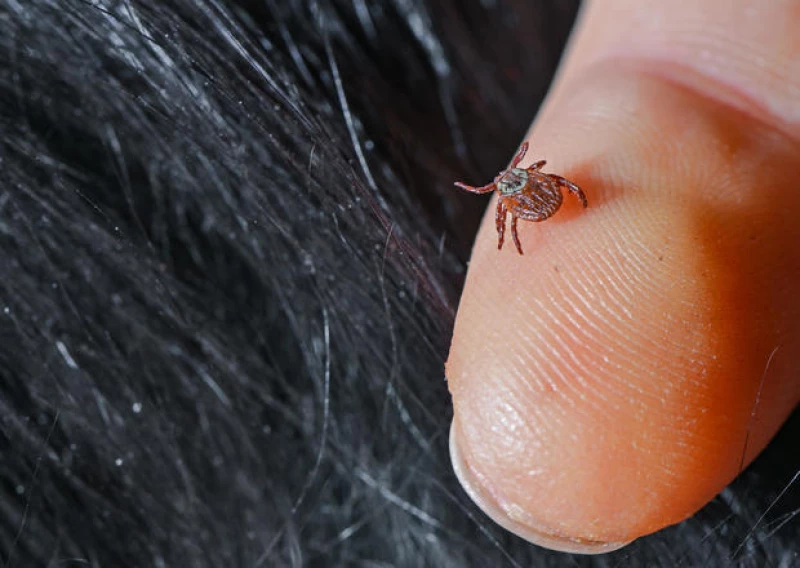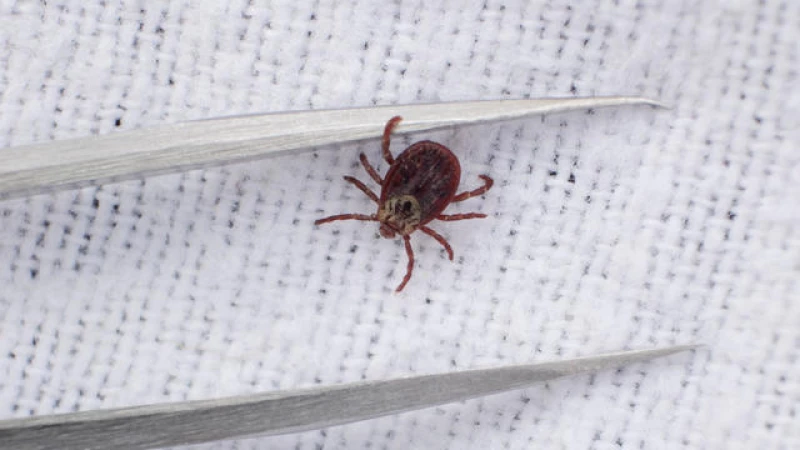Tick bites have the potential to cause a variety of different illnesses — and as temperatures rise, ticks become more active.
In certain regions, ticks have been appearing earlier than usual due to mild winters. For instance, Minnesota's Metropolitan Mosquito Control District reported discovering their first deer tick of the year in February, a month earlier than the typical March or April sightings.
"One concerning aspect of this past winter is the lack of extremely cold days, which usually help reduce the tick population," mentioned Alex Carlson from the Metropolitan Mosquito Control District in an interview with CBS Minnesota.
With fewer cold days, Carlson anticipates a potentially harsher tick season in the spring.
"Tick-borne diseases are increasingly prevalent across the country and here in Minnesota. We are observing a rise in Lyme disease and other tick-related illnesses, underscoring the importance of being informed and cautious about ticks," he emphasized.
Here's a brief overview of what you should be aware of:
What is the appearance of ticks?
Ticks are typically small, flat, and oval-shaped insects without wings, as described by Terminix, with colors varying from grayish-white, brown, black, reddish-brown to yellowish.
"Nymphs and adults will have eight legs, but tick larvae only have six," the pest control company's website reads. "Ticks are capable of biting at all three of their active life stages: larval, nymph and adult."
Depending on their life stage, most ticks can range from the size of a grain of sand to a sesame seed to an apple seed or pencil eraser, Terminix describes.
After feeding from their host, however, ticks become engorged and larger in appearance.
"When fully-engorged, hard ticks typically increase in size to become close to twice the size of an unfed tick adult," Orkin describes.
Ticks also consists of two parts: a head and abdomen.
"The tick's head is very small compared to its abdomen, so much so that oftentimes they are described as looking like a body with six or eight curved legs," Orkins' website notes.
Still not sure if what you're seeing is a tick?
The Centers for Disease Control and Prevention has a tick identification page with photos of commonly found species in the U.S. The page also includes a size chart for a few ticks that commonly bite humans: the blacklegged tick, lone star tick and American dog tick.
How to get rid of ticks
If you find a tick on you, you'll want to remove it quickly and correctly.
Tips for Safely Removing and Handling Ticks
"Don't wait to have it removed," advises Bryon Backenson, an assistant professor at the University of Albany School of Public Health. Backenson recommends using a fine-point pair of tweezers to gently and firmly pull the tick straight up, as close to the skin as possible.

To prevent ticks from entering your home on clothing, Backenson suggests putting outdoor clothes in a hot dryer for approximately 10 minutes, as the heat is sufficient to kill any ticks present.
It is important to never crush a tick with your fingers. Instead, the CDC advises disposing of a live tick by placing it in alcohol, sealing it in a bag, wrapping it in tape, or flushing it down the toilet.
After removing a tick, the CDC recommends cleaning the bite area and your hands with rubbing alcohol or soap and water.
When to Be Concerned About a Tick Bite
Following a tick removal or suspected tick bite, it is crucial to monitor the area for any symptoms. If symptoms develop, seeking medical attention is recommended.
According to the Mayo Clinic, a tick bite may appear as a small, itchy bump on the skin, similar to a mosquito bite. Some individuals may not even realize they have been bitten by a tick.
While being bitten by a tick does not guarantee the transmission of a tick-borne disease, early symptoms of Lyme disease, caused by borrelia bacteria carried by ticks, typically manifest within 3 to 30 days after a bite.
Warning Signs of Tick-Borne Illnesses
One common sign of tick-borne illnesses is a bull's-eye-shaped rash, which may not always look like a perfect circle but appears as a red patch on the skin. This rash is usually relatively large, at least 2 inches across, and may not cause any pain or itching.
It's important to note that ticks carrying borrelia bacteria, which can lead to Lyme disease, are prevalent throughout most parts of the United States. However, Lyme disease is most frequently reported in the upper Midwest, northeastern, and mid-Atlantic regions.
In addition to Lyme disease, certain tick bites can also result in alpha-gal syndrome, a severe allergic reaction to consuming red meat. Lone star ticks, commonly found in the southeastern and eastern U.S., are believed to trigger this allergic response, although other tick species have not been ruled out as potential culprits, according to the CDC.
Another rare but serious tick-borne infection is the Powassan virus, primarily found in the Northeastern region. This virus can cause meningoencephalitis, leading to inflammation and infections in the brain. Patients who survive this viral encephalitis may experience significant neurological complications, as noted by infectious disease specialist Dr. Jeannina Smith from UW Health.
Health Alert: Understanding Different Tick-Borne Illnesses
Just like Lyme disease, Powassan virus can initially present with flu-like symptoms and later progress to confusion and difficulty speaking. It is crucial to seek medical attention promptly upon experiencing these symptoms. Additionally, Alpha-gal syndrome is another tick-borne illness that can manifest as skin and gastrointestinal issues, among other symptoms.







